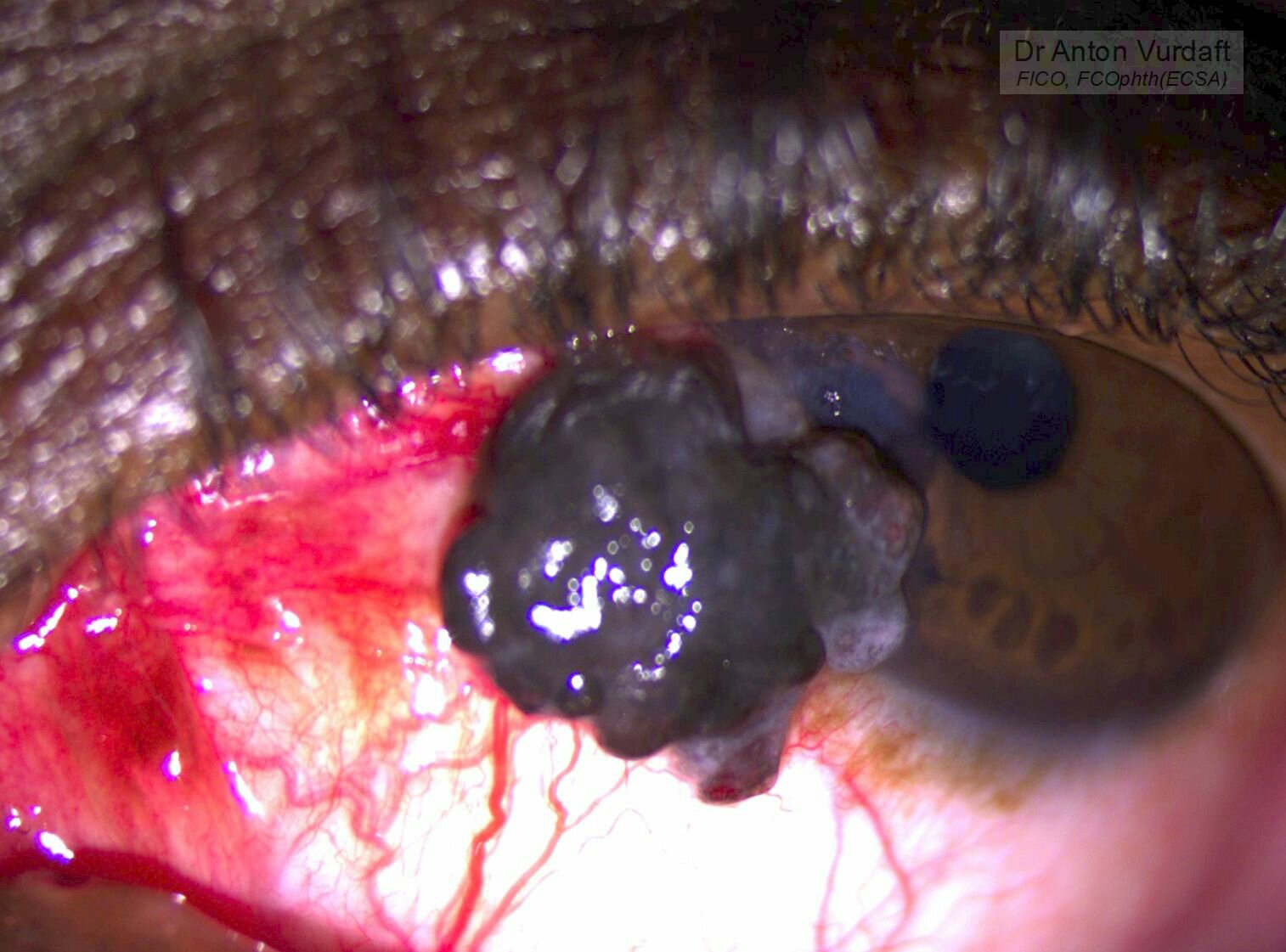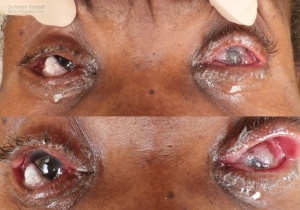![]() EN: Case of May 2016: patient presented with this brown elevated slowly-growing mass. Differential in our setup will always include OSSN. We know that conjunctival melanoma, uveal melanoma and skin melanoma are all quite rare in dark skinned people, though we consider it for differential as well (PMID 18191091). Histopathology confirmed invasive squamous cell carcinoma. It is hardly probable for OSSN to be black in white people. Nevertheless it is quite common in blacks.
EN: Case of May 2016: patient presented with this brown elevated slowly-growing mass. Differential in our setup will always include OSSN. We know that conjunctival melanoma, uveal melanoma and skin melanoma are all quite rare in dark skinned people, though we consider it for differential as well (PMID 18191091). Histopathology confirmed invasive squamous cell carcinoma. It is hardly probable for OSSN to be black in white people. Nevertheless it is quite common in blacks.
Ideal treatment: wide excision with no-touch technique, followed by antimetabolites (5-FU/MMC) or cryotherapy. Lamellar sclerectomy is indicated when invasion is suspected. This case was managed without cryo. The technique for cryo is good described here:
Cryoprobe was placed on the lifted conjunctival margin for 3 seconds and then allowed to thaw. • A subsequent 3-second application would be applied adjacent to and slightly overlapping the prior application. Upon reaching the limbal margin, the cryoprobe was placed such that it would freeze the limbus and about 0.5mm of cornea.
https://doi.org/10.1016/j.ajo.2015.04.027
![]() RU: Инвазивный плоскоклеточный рак: чёрный маскарад. Случай от мая 2016 г.
RU: Инвазивный плоскоклеточный рак: чёрный маскарад. Случай от мая 2016 г.
Редкий случай чёрной поверхностной неоплазии глаза. В дифференциальный диагноз входила меланома, однако гистология подтвердила инвазивный плоскоклеточный рак. Довольно нетипичная пигментация, даже для чернокожих. Известно, что поверхностная неоплазия у белых людей практически не бывает пигментированной. В то же время, это не редкость среди людей с тёмной кожей. Полезный факт – всё глазные варианты меланомы – меланома кожи, сосудистой оболочки глаза и конъюнктивы глаза – встречаются значительно реже у чернокожих людей. Средняя по больнице заболеваемость конъюнктивальной меланомой – 0,012 на 100 тыс. населения (PMID 9763137). Но у чернокожих людей частота меланомы минимум в 3-4 раза меньше, чем у белых (PMID 18191091).

Invasive pigmented squamous cell carcinoma of conjunctiva. DDx: melanoma.
